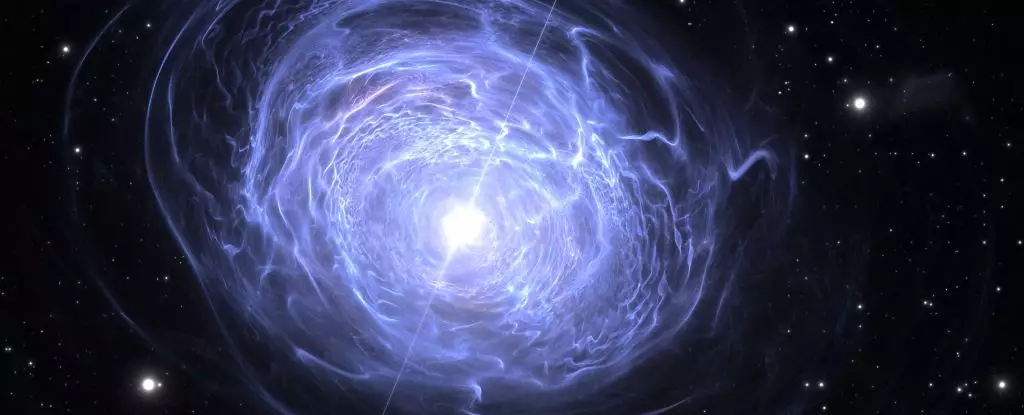Astronomers have recently detected a peculiar signal originating from a neutron star known as ASKAP J193505.1+214841.0, or ASKAP J1935+2148. Situated within the Milky Way galaxy approximately 15,820 light-years away from Earth, this neutron star has puzzled scientists with its unconventional pulsation patterns. Unlike typical neutron stars that exhibit consistent behavior, ASKAP J1935+2148 undergoes fluctuations between strong pulses, weak pulses, and complete absence of pulses. The enigmatic nature of these signals presents a significant challenge to current models of neutron star evolution, which remain far from comprehensive.
Neutron stars, remnants of massive stars that have undergone supernova explosions, are characterized by extreme densities and powerful magnetic fields. These celestial objects can manifest in various forms, including base neutron stars, pulsars that emit beams of radio waves, and magnetars with highly intense magnetic fields. While these categories offer a general classification of neutron stars, ASKAP J1935+2148 defies conventional categorization. Its irregular pulsation modes deviate significantly from the expected behavior of known neutron star types.
In addition to ASKAP J1935+2148, astronomers have identified other mysterious objects in the cosmos exhibiting anomalous signals. These include GLEAM-X J162759.5-523504.3, which emitted bright flashes for a brief period before falling silent, and GPM J1839-10, a slow pulsar emitting radio waves in unusual bursts. Another pulsing object, GCRT J1745-3009, located near the galactic center, presents with its own distinct pulsation period. While the exact nature of these objects remains uncertain, they share similarities with neutron stars, making them potential candidates for further investigation.
Researchers speculate that ASKAP J1935+2148 and its counterparts represent a novel category of magnetars that are transitioning into pulsar states. The variations in pulsation modes observed in ASKAP J1935+2148 are believed to stem from magnetospheric changes and underlying processes unique to these enigmatic objects. By studying these peculiar signals, astronomers hope to gain insights into the evolutionary pathways of neutron stars and the mechanisms responsible for their diverse behaviors.
The discovery of ASKAP J193505.1+214841.0 and its anomalous pulsation patterns challenges existing knowledge of neutron star evolution. With each new observation, astronomers are confronted with the complex and dynamic nature of these celestial entities. As we continue to unravel the mysteries of the cosmos, the enigma of ASKAP J1935+2148 serves as a reminder of the boundless mysteries that await exploration in the depths of space.


Leave a Reply